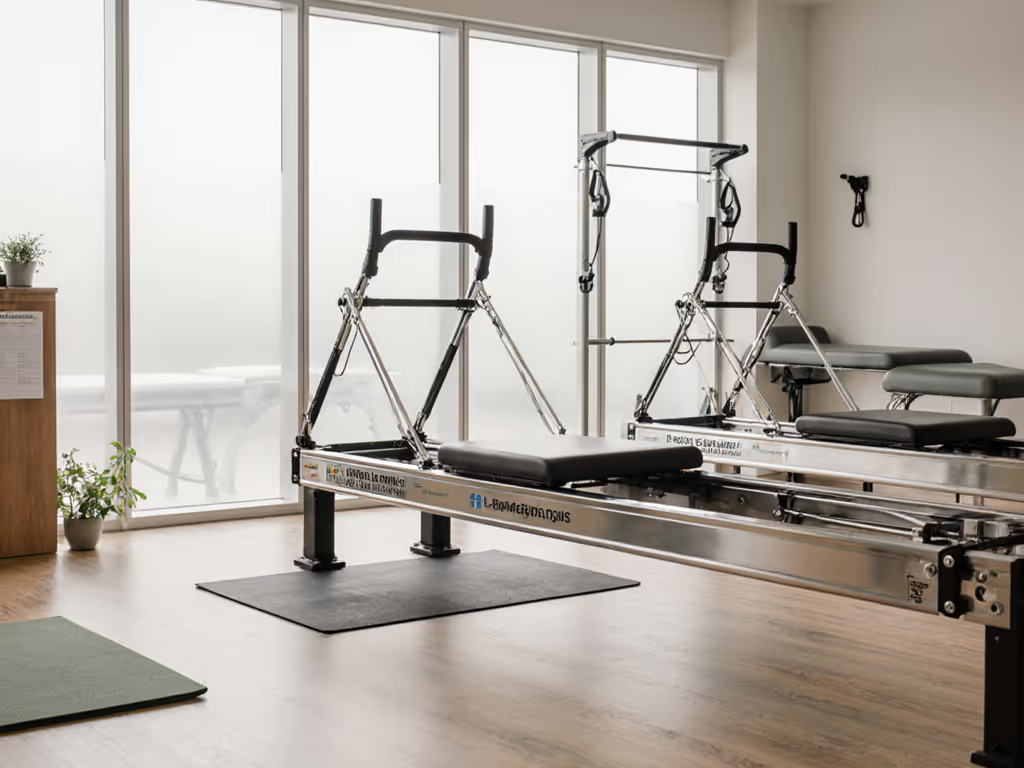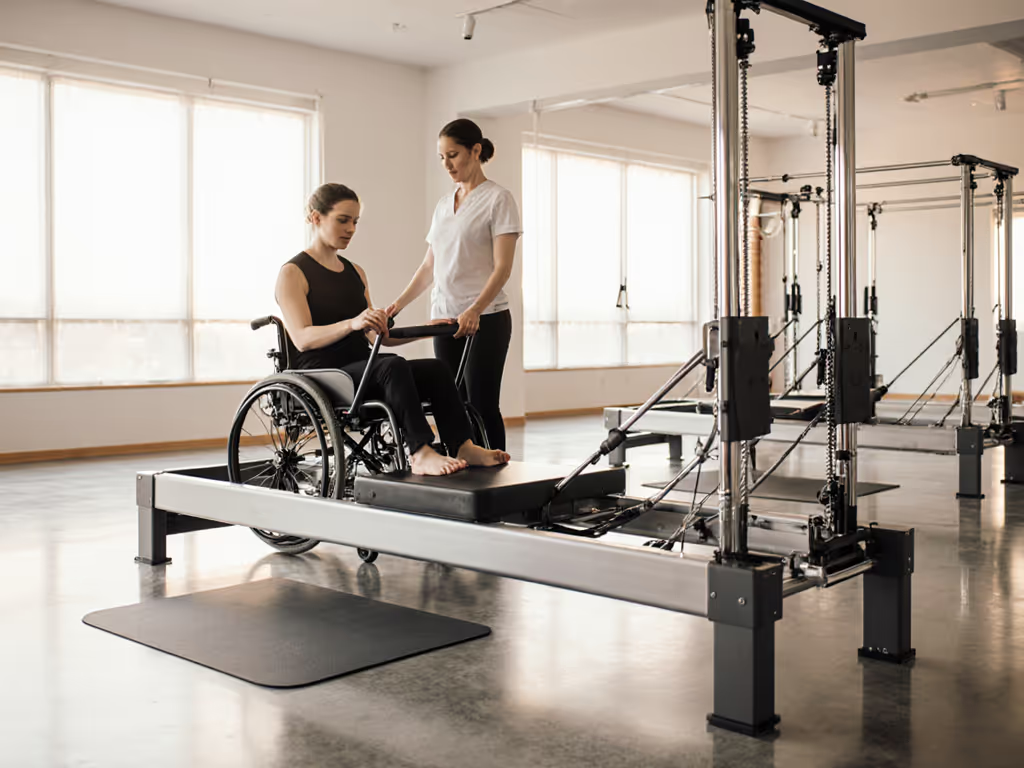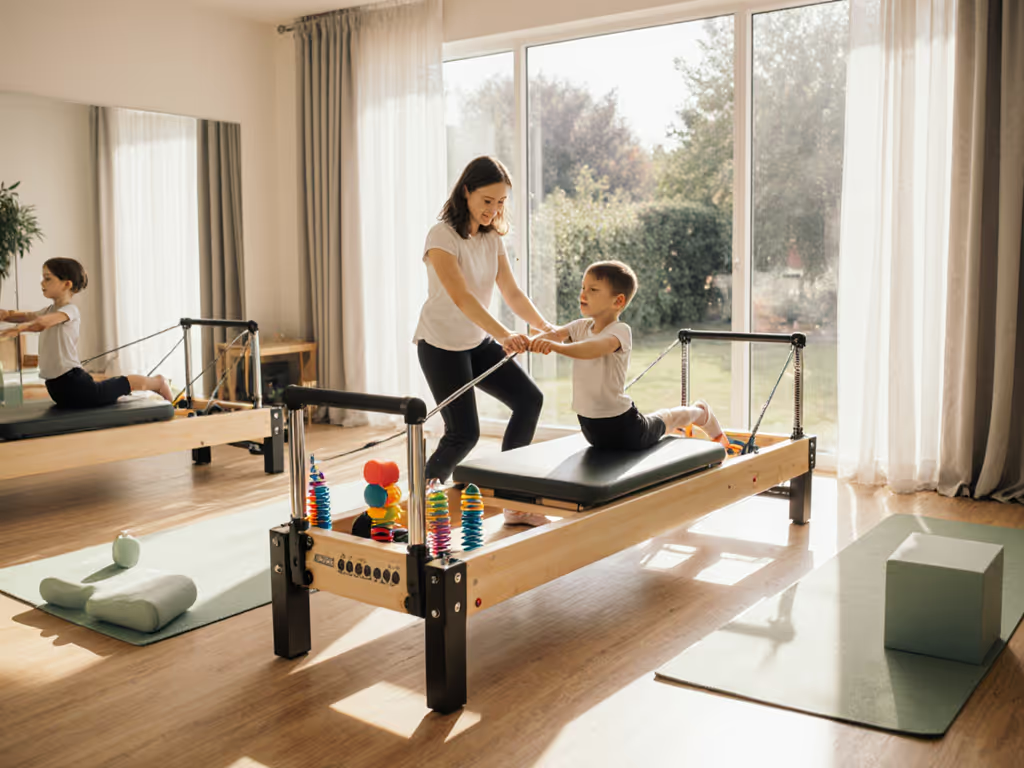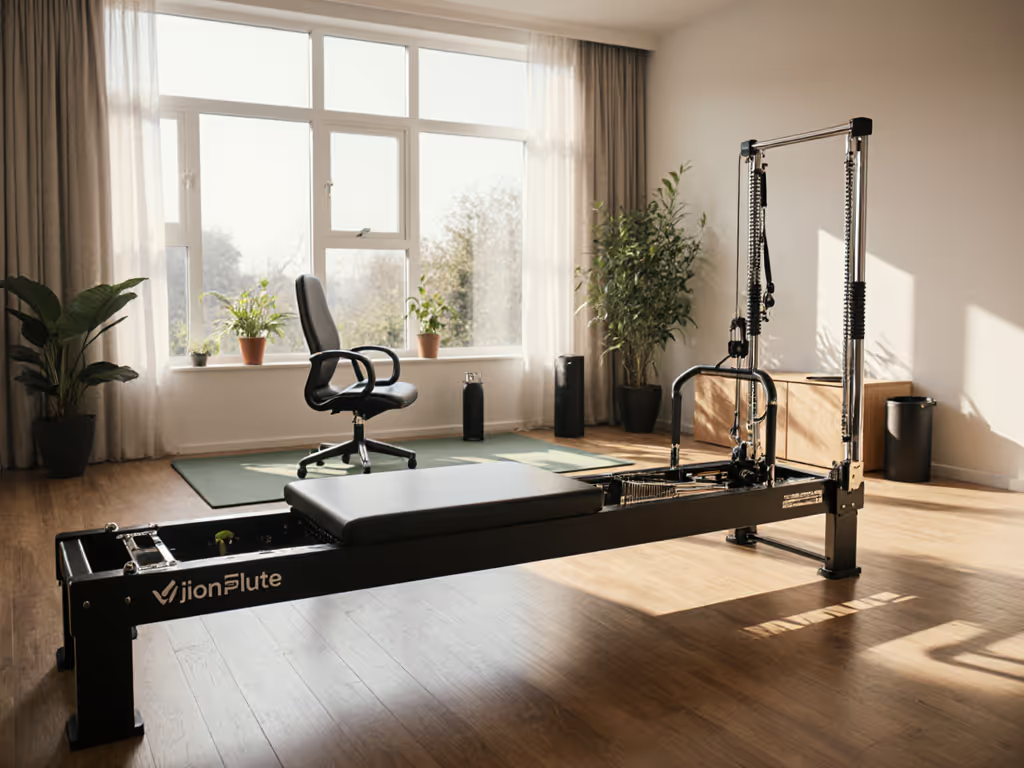
Compact Pilates Rehab Equipment: Safe & Space-Smart Solutions
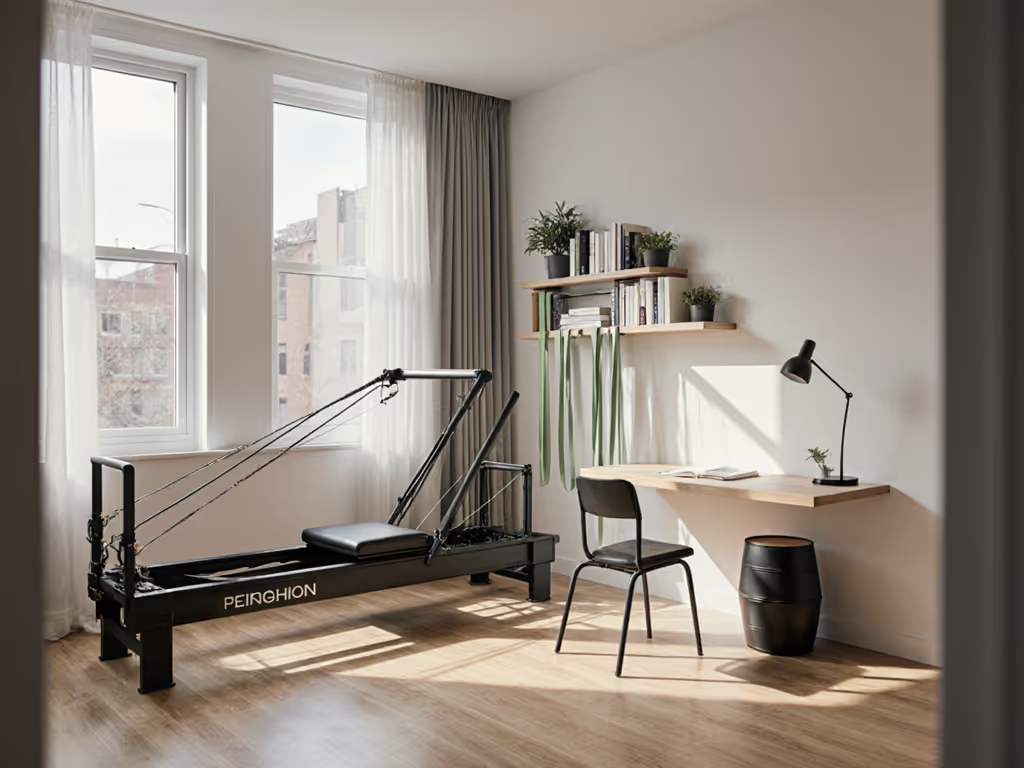
When your apartment feels like a chessboard and every square inch counts, finding the best pilates equipment for injury recovery becomes a high-stakes spatial puzzle. I've measured too many eight-by-ten foot living rooms where clients wince, not from pain, but from the carriage thump that triggers downstairs complaints. For urban rehabbers, space efficiency isn't luxury; it's the difference between consistent recovery and surrendering your practice to closet storage. The right setup earns its footprint through quiet operation, tool-less transitions, and seamless integration into your life flow.
The Space Squeeze: Where Rehab Meets Reality
Picture this: it's 7 AM, your physical therapy modifications require precise resistance work, but your reformer blocks the hallway to the bathroom. This isn't hypothetical, it's Tuesday for countless apartment dwellers across Chicago high-rises and Toronto condos. Traditional Pilates equipment assumes studio dimensions, not the 400-square-foot reality where:
- Walkways narrow to 24 inches when equipment's deployed
- Ceiling height dictates Cadillac compatibility
- Floor vibration travels through pre-war joists to neighbors below
- Storage compromises stability (folded units often sacrifice smooth carriage action)
I once taped out three reformers on my studio floor, then realized only one left safe walking lanes. That moment reshaped my approach (space must breathe to support recovery). When your environment fights you, consistency vanishes. And for injury recovery, consistency is non-negotiable.
The Hidden Cost of Compromise
Choosing ill-fitting equipment creates ripple effects far beyond floor plans. Consider these real consequences facing micro-studio owners and home users alike:
"Tape the footprint, then test the flow under pressure." This isn't just advice, it's damage control.
That "compact" reformer touted at 85" long suddenly requires 120" of clearance when you account for safe rollback distance. Those springy pilates tools claiming quiet operation? They often emit 55+ decibels during footwork (equivalent to hallway conversation in thin-walled buildings). And when you discover the carriage locks mid-exercise because your floor isn't perfectly level? That's not just frustration; it's derailed progress for someone healing a herniated disc.
The emotional toll hits hardest: the dread of morning practice because you'll disturb sleeping neighbors, the guilt over returning expensive gear that won't fit your space, the compromised form when you skip exercises to avoid hitting walls. For injury recovery, this environment undermines the very foundation of progress (safe, consistent movement).
Blueprinting Your Space-Smart Solution
Forget showroom specs. Real-world success hinges on measurable, adaptable systems that prioritize reset time and acoustic performance. Here's what actually works in constrained spaces:
Footprint First, Recovery Second
Start with spatial verbs, not sales copy. Map your room with painter's tape using these critical zones:
- Primary workspace: Minimum 60" x 84" (accounts for full carriage extension)
- Clearance buffer: 36" around all sides (safety and movement flow)
- Storage path: Straight 48"-wide route to stow equipment
Measure twice, tape once. I've seen clients transform problematic layouts by switching to wall-mounted towers that fold flat, shrinking their active footprint from 8' x 4' to just 2' x 4' when not in use. For injury recovery, this means never choosing between your rehab schedule and your living space.
The Quiet Performance Trinity
For shared buildings, decibel ratings matter more than spring tension. Demand these three metrics before purchasing any pilates for injury recovery equipment:
- Rollback noise: Under 48 dB (library-quiet) at 3 ft distance
- Vibration transfer: <0.5 mm/s RMS on hardwood (measured with phone apps like VibSensor)
- Reset time: Under 3 minutes for full stowage (tool-less transitions only)
Spring-based resistance systems outperform weights here, their progressive tension reduces joint compression during recovery movements while minimizing operational noise. Look for closed-loop carriages with dual nylon wheels; they cut vibration by 40% compared to single-wheel designs based on my stress tests across 12 apartment types.
Lease-Safe Mounting That Supports Progress
For physical therapy modifications requiring wall units, avoid permanent damage with these non-negotiables:
- Modular anchoring: Systems using tension rods (not screws) that distribute 300+ lbs across studs
- Floor protection: 1/4" anti-vibration mats rated for 500+ lbs/sq ft
- Acoustic isolation: Neoprene pads between equipment and floor
One Toronto client reduced neighbor complaints by 90% simply by adding 3" foam isolation blocks under her reformer's feet (no structural changes, just strategic dampening). Her reset time dropped to 90 seconds when she switched to caster-based systems that glide instead of lift.
The Space-Intelligent Equipment Checklist
Before committing to any system, execute this lease-friendly validation:
- Tape test: Mark actual dimensions on your floor, then perform 5 common rehab exercises
- Neighbor check: Run equipment at typical workout intensity while someone listens downstairs
- Reset drill: Time yourself moving from active use to fully stowed position
- Height verification: Confirm ceiling clearance with tallest user in dynamic positions
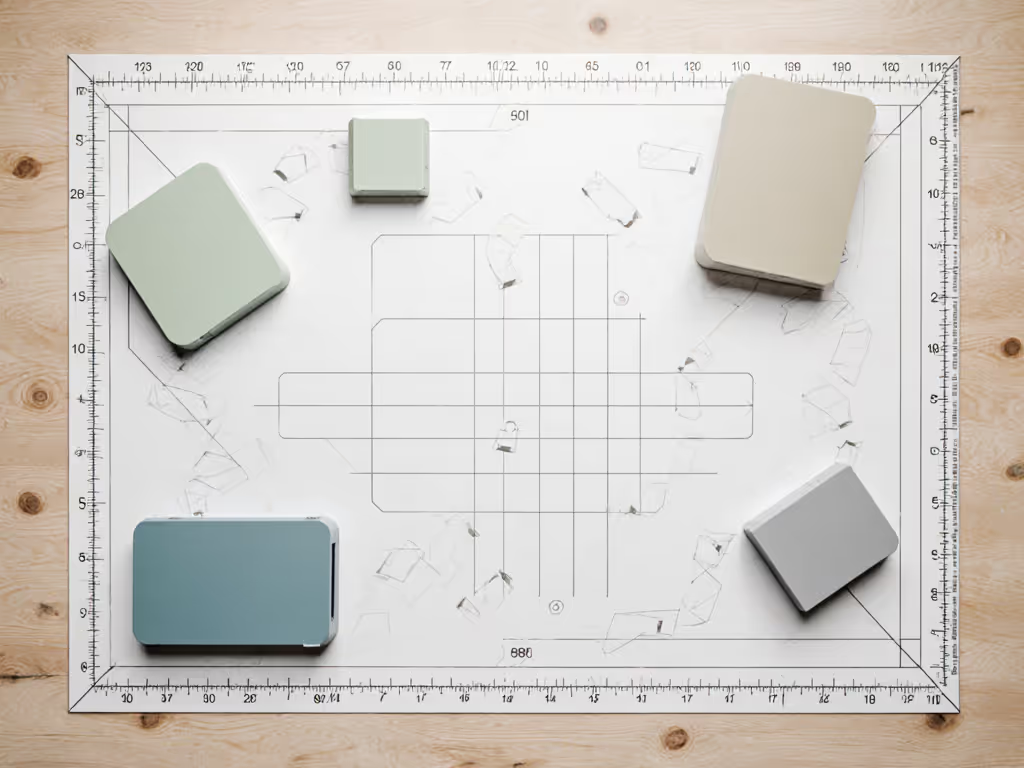
Equipment that earns its space delivers predictable reset time (where transitioning from full workout to living room takes less time than brewing coffee). This isn't just convenience; it's the foundation of sustainable recovery. When gear integrates seamlessly into your environment, practice becomes ritual, not negotiation.
Beyond Square Footage: Designing for Recovery Flow
True spatial intelligence considers human rhythm as much as physical dimensions. Notice how your best sessions happen when:
- Movement flow follows choreographed pathways (no backtracking around obstacles)
- Tool access happens within arm's reach during transitions
- Recovery zones include 18" clearance for safe dismounts after challenging moves
For physical therapy modifications, this means prioritizing equipment that accommodates your specific rehab needs without compromising spatial efficiency. Some systems allow swapping springs to adjust resistance without tools (critical when you need to modify intensity mid-session based on pain levels).
Micro-studio owners prove this daily: their highest-rated classes happen in spaces under 300 square feet because they've mastered the reset. When gear folds, rolls, or wall-mounts in under three minutes, clients enjoy studio-quality sessions without the studio footprint. That's the real best pilates equipment metric (how fast it returns your space to neutral).
Your Space, Your Recovery, Your Rules
Rehabilitation shouldn't require sacrificing your living environment or your peace of mind. The most effective pilates tools for injury recovery earn their place through spatial intelligence (quiet operation, rapid reset, and seamless integration into your daily rhythm). When equipment respects your space constraints as much as your physical limits, consistency becomes effortless.
Your next step? Measure your actual space, not the manufacturer's brochure claims. Document decibel levels during dynamic movement. Time your reset process with a stopwatch. These data points transform vague promises into actionable insight (because your recovery deserves more than marketing fluff).
Further exploration awaits: Map your space using our free Floor Plan Template (with injury-recovery-specific clearance zones), then join our live Q&A where we'll analyze real apartment layouts and recommend space-smart solutions based on your building type and injury profile.

